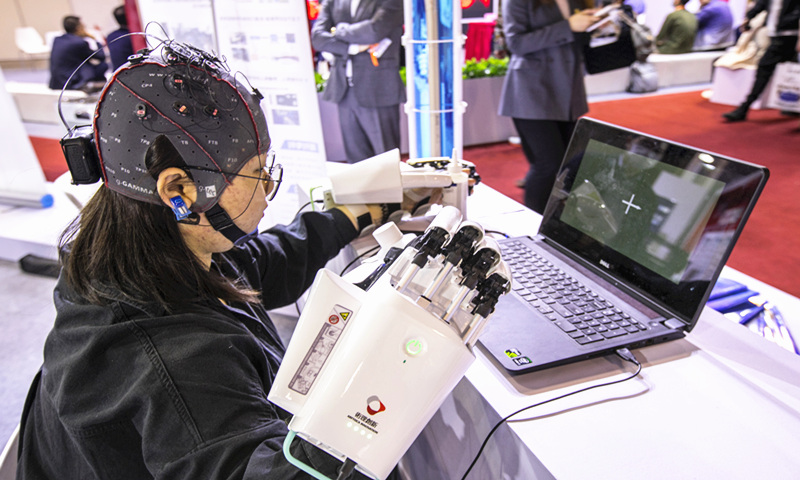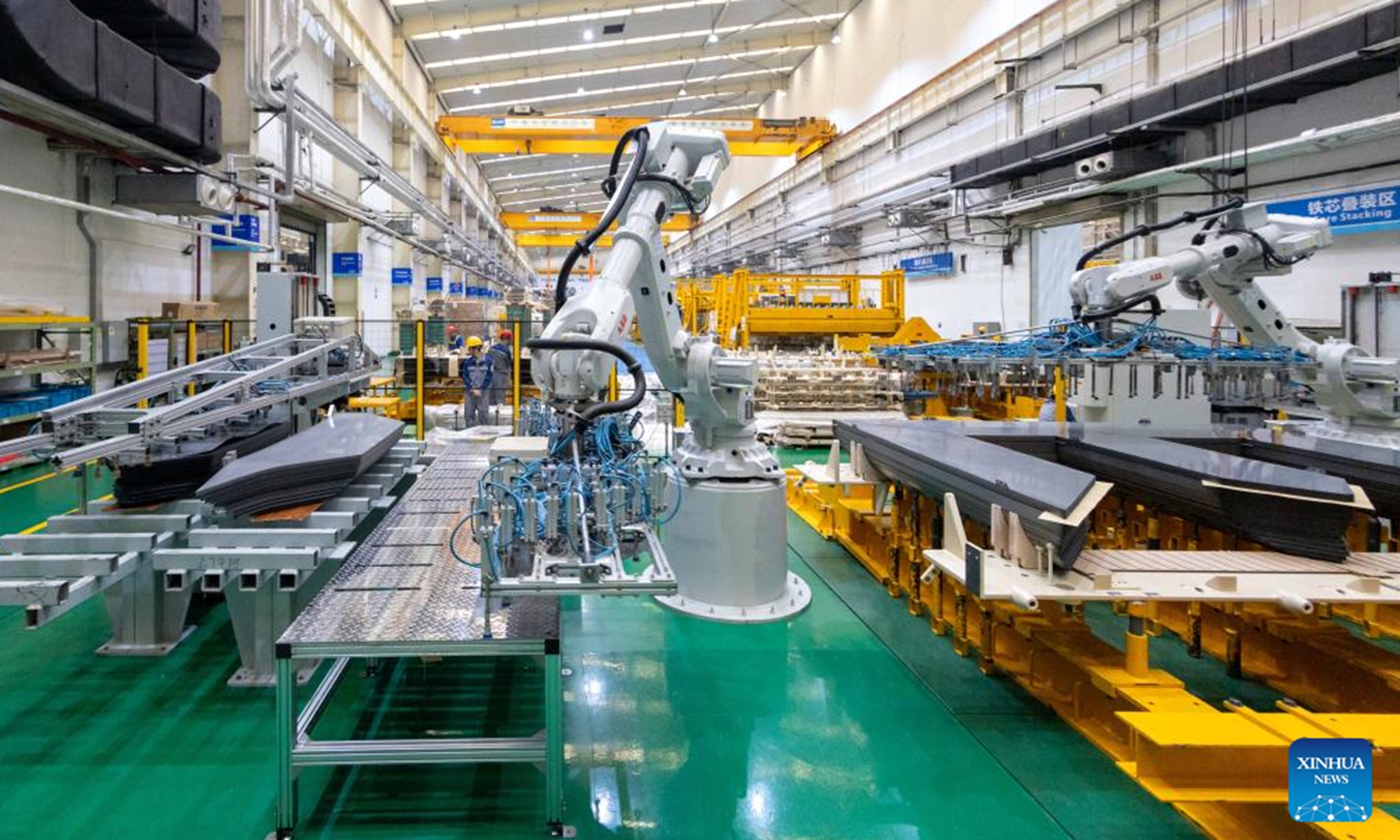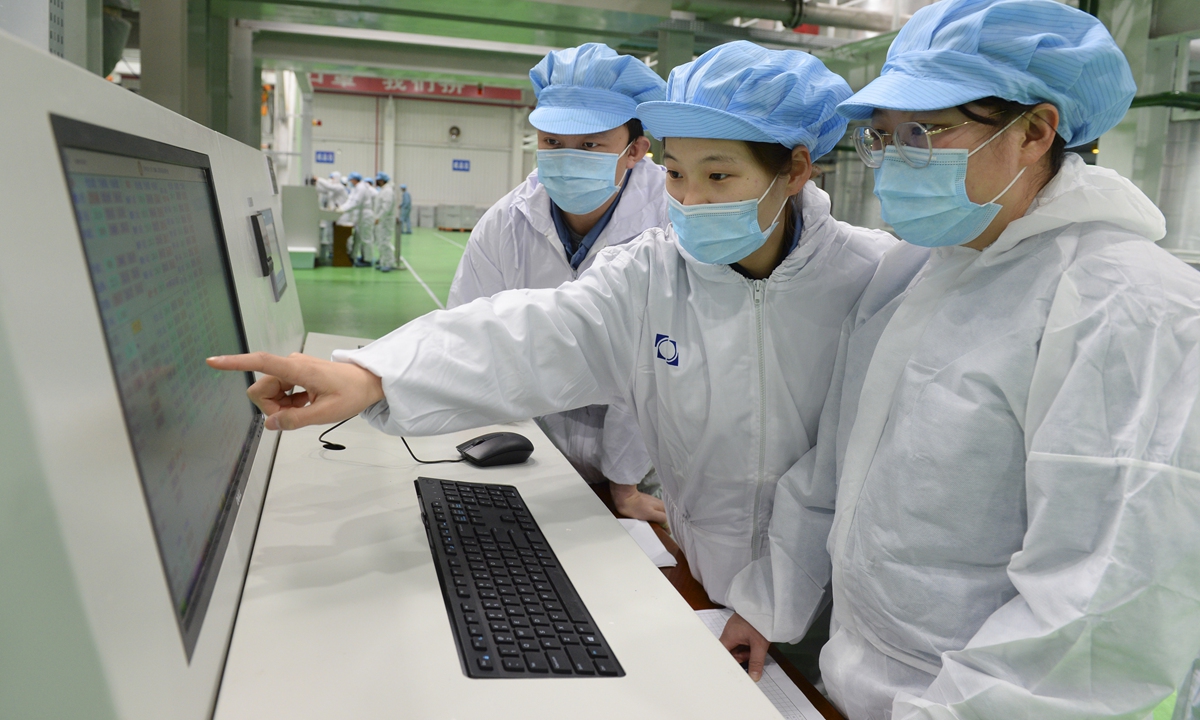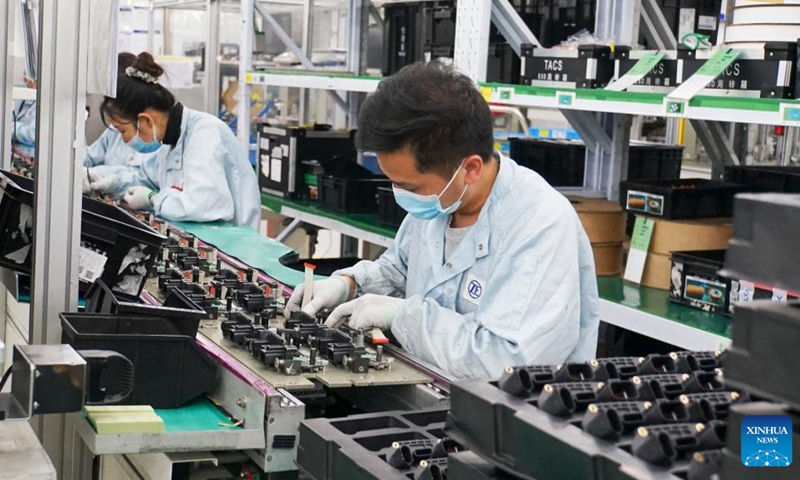China to make forward-looking arrangements for future industries including humanoid robots, brain-computer interface

A BCI product, Xhand, is showcased at China (Shanghai) International Technology Fair on April 15, 2021. Photo: VCG
China will make forward-looking arrangements for future industries including humanoid robots and brain-computer interface, while trying to make breakthroughs in key technologies, China's Minister of Industry and Information Technology Jin Zhuanglong said on Friday.
"We are trying to achieve a number of iconic results, form a number of iconic products and build a number of business incubators," Jin said at the press conference.
The future industries involve advanced technology, such as the metaverse, humanoid robots, brain-computer interface and quantum information.
Chinese Premier Li Qiang has called for efforts to promote the digital transformation of the manufacturing sector and boost the development of enterprises that use specialized and sophisticated technologies to produce novel and unique products in a bid to modernize the industrial system, Xinhua News Agency reported on Wednesday.
A government guideline released in January said that China will support technological innovation, industrial cultivation and safety governance in future industries, Xinhua News Agency reported.
A batch of incubators and pilot zones of future industries should be built by 2025, while breakthroughs should be achieved in about a hundred core technologies in key fields, according to the guideline.
The guideline called for efforts to develop signature products, enrich application scenarios and optimize industrial supporting systems for future industries, with a particular focus on six key fields: manufacturing, information, materials, energy, space and health.
According to the Ministry of Industry and Information Technology, China's strategic emerging industries currently account for about 13 percent of GDP, with huge room for growth and potential.
For emerging industries such as new materials, artificial intelligence, intelligent networked new energy vehicles, new energy storage, hydrogen energy, biomanufacturing, commercial aerospace, and the low-altitude economy, it is necessary to cultivate a group of leading enterprises with strong ecological leadership and to form more leading enterprises for industrial upgrading, Jin said.
The industrial economy has achieved a good start since the beginning of this year. Official data showed that the added value of industries above designated size increased by 6.2 percent year-on-year in the first five months of this year, with a growth rate 1.6 percentage points faster than in 2023.
In May, the value added by the equipment manufacturing industry above designated size increased by 7.5 percent year-on-year, and the value added of high-tech manufacturing industry increased by 10 percent year-on-year.
Jin warned that the industrial economy still faces some challenges as the current external environment is complex and domestic demand is still insufficient.
Although China's industrial development has made great progress, there are still shortcomings in key core technologies and basic industrial capabilities. Enterprises, especially small and medium-sized enterprises, still face many operating difficulties, Jin added.
"We will encourage those provinces with strong industries to play a key role in stabilizing the industrial economy, and to further expand investment in manufacturing, Jin said.
In terms of key core technologies, Jin called for major national science and technology projects and strengthened basic research.
Global Times



